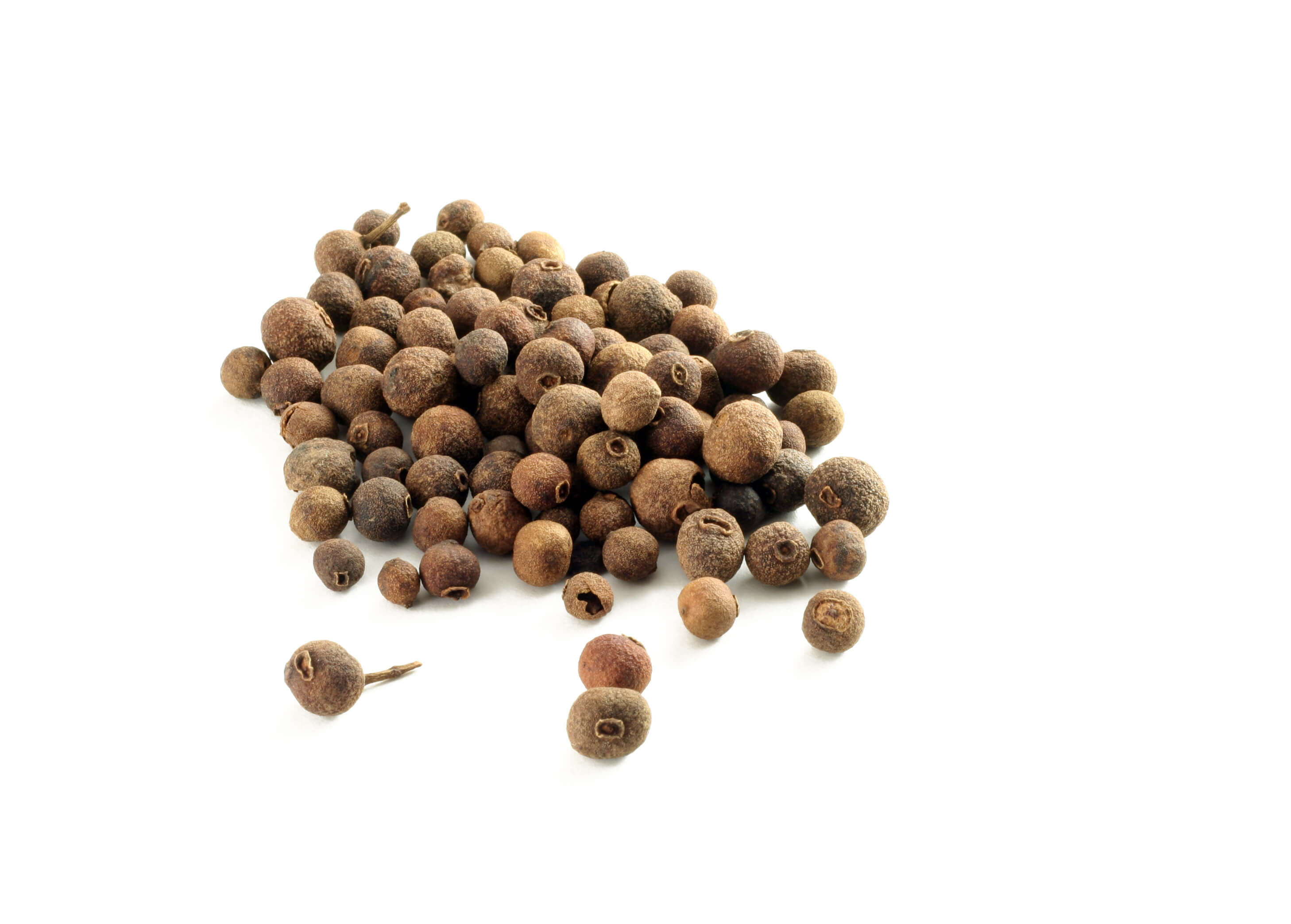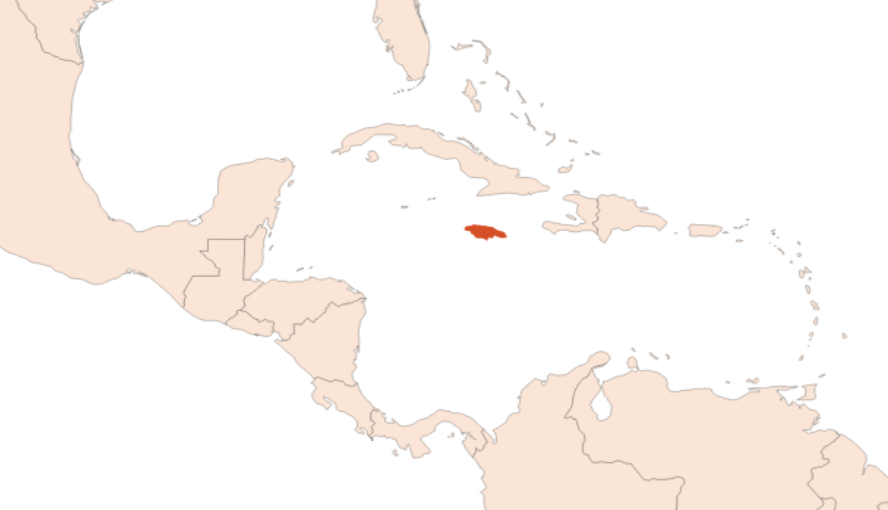Allspice EO
Naturelle
Spicy > Warm Spices > Eugenolic > Metallic > Terpenic

Crédits photo: ScenTree SAS
Latin name :
Pimenta dioica
Botanical profile :
Also called Jamaican pepper, this berry is the fruit of a persistent tree of the Myrtaceae family and the genus Pimenta.
Geographic origin :
Originally from Jamaica, the Pimenta dioica is still grown mainly in its country of origin, but also in other Central American countries and in some Caribbean islands
Chemotypes :
The other species of the genus Pimenta, widely used in perfumery, is the Pimenta racemosa or Bay St-Thomas EO, with a less terpenic and more medicinal smell.
The two raw materials remain relatively close olfactively.
Two other species of the genus Pimenta exist, but are less used for the perfume industry : Pimenta pseudocaryophyllus, grown in South America. Pimenta Guatemalensis, native to Guatemala.
The two raw materials remain relatively close olfactively.
Two other species of the genus Pimenta exist, but are less used for the perfume industry : Pimenta pseudocaryophyllus, grown in South America. Pimenta Guatemalensis, native to Guatemala.
Extraction process :
Allspice, or Jamaican pepper, is the fruit of a tree that is always green. Its leaves, which look like bay leaves, are fragrant and the berries are even more. The propagation of a crop is done by sowing seeds. The older trees are the ones who give the most fruit and they are used to harvest the seeds. It takes 18 to 20 years for a tree to be at its best crop yield. After ten years, 10 kg of berries can be extracted from a tree each year. The trees are cultivated every three years.
From August to October, growers climb the trees to break the branches with their hands. Using an iron ax would actually make the iron react with the tannic acid present in the branches of the tree. An infection like this would kill the tree in two years. Once on the ground, the branches are beaten to make the berries fall. The berries, still green to optimize the extraction yield, are sun-dried for four to ten days, after a possible bath in boiling water (a habit in Guatemala). Drying is sometimes done mechanically to reach a dark brown colour. Then, the berries are crushed and extracted by steam distillation. The essential oil is collected by decantation at the refrigerant outlet.
The yield of the essential oil varies from 3 to 4.5%. Moreover, extraction with a volatile solvent or with supercritical CO2 can be carried out on the berries to obtain an extract with a different composition. Finally, the leaf of the tree can be extracted with a relatively similar yield and composition.
From August to October, growers climb the trees to break the branches with their hands. Using an iron ax would actually make the iron react with the tannic acid present in the branches of the tree. An infection like this would kill the tree in two years. Once on the ground, the branches are beaten to make the berries fall. The berries, still green to optimize the extraction yield, are sun-dried for four to ten days, after a possible bath in boiling water (a habit in Guatemala). Drying is sometimes done mechanically to reach a dark brown colour. Then, the berries are crushed and extracted by steam distillation. The essential oil is collected by decantation at the refrigerant outlet.
The yield of the essential oil varies from 3 to 4.5%. Moreover, extraction with a volatile solvent or with supercritical CO2 can be carried out on the berries to obtain an extract with a different composition. Finally, the leaf of the tree can be extracted with a relatively similar yield and composition.
Major Components :
Eugenol (80-90%)
Methyl Eugenol (1-10%)
Beta-Caryophyllene (2-5%)
Alpha-Muurolene (≈1%)
Alpha-Selinene (≈1%)
Methyl Eugenol (1-10%)
Beta-Caryophyllene (2-5%)
Alpha-Muurolene (≈1%)
Alpha-Selinene (≈1%)
- Uses in perfumery :
- Used in spicy, floral-carnation, rose, tuberose, oregano and woody notes.
- Other comments :
- The smell of the bay is close to Clove Bud EO, Cinnamon leaf EO, Nutmeg EO and pepper black EO, and for this reason it is called ''allspice ''.
The Latin name Pimenta is derived from the spanish ''Pimiento '', used to name the black pepper, and the term dioica (meaning two habitats in greek) means that the male and female flowers of the plant grow on different plants.
The tree was discovered at the same time as the American continent, during the conquest of Christopher Columbus. It was brought back to England where a culture was made until the Second World War, during which the trees were cut.
Jamaica is the main exporter of this spice, to the USA, Germany and the United Kingdom in majority, occupying 70% of the market share.
Several diseases can affect the leaves of the tree, as well as pests of many types, which can affect the crops and reduce the production.
The quality of the Allspice essential oil is checked according to the standards dictated by the Food and Drug Administration Defect Action Levels (FDADAL), by the American Spice Trade Association (ASTA) and the European Spice Association (ESA). Nevertheless, the essential oil can be adulterated with Clove Bud EO or Myrtus tabasco essential oil, which is less expensive. For the same reasons, there are also additions of essential oil from the tree leaves or Eugenol. - Volatility :
- Heart
- Appearance :
- Colorless liquid
- Stability :
- Aromatic compounds can be chromophoric and cause a coloration of the oil, especially in alkaline bases
- Price Range :
- €€€
- Aromatherapy :
Informations provided below are taken from reference works in aromatherapy. They are given for information purposes only and can not constitute medical information, nor engage the responsibility of ScenTree.
The essential oil of Allspice is renowned for its anti-infectious, antiviral and pulpal (good for dental pulp) virtues. It is recommended in cases of toothache (dental pain), tonsillitis (inflammation of the tonsils), hepatitis (liver inflammation), dysentery, urethritis, infected acne and malaria.

Crédits photo: ScenTree SAS
- EINECS number :
- 284-540-4
- FEMA number :
- 2018
- Allergens :
- Eugenol - D-Limonene - Linalool
- IFRA :
- This ingredient is not restricted
To learn more about IFRA's standards : https://ifrafragrance.org/safe-use/library
ScenTree is solely responsible for the information provided here.

